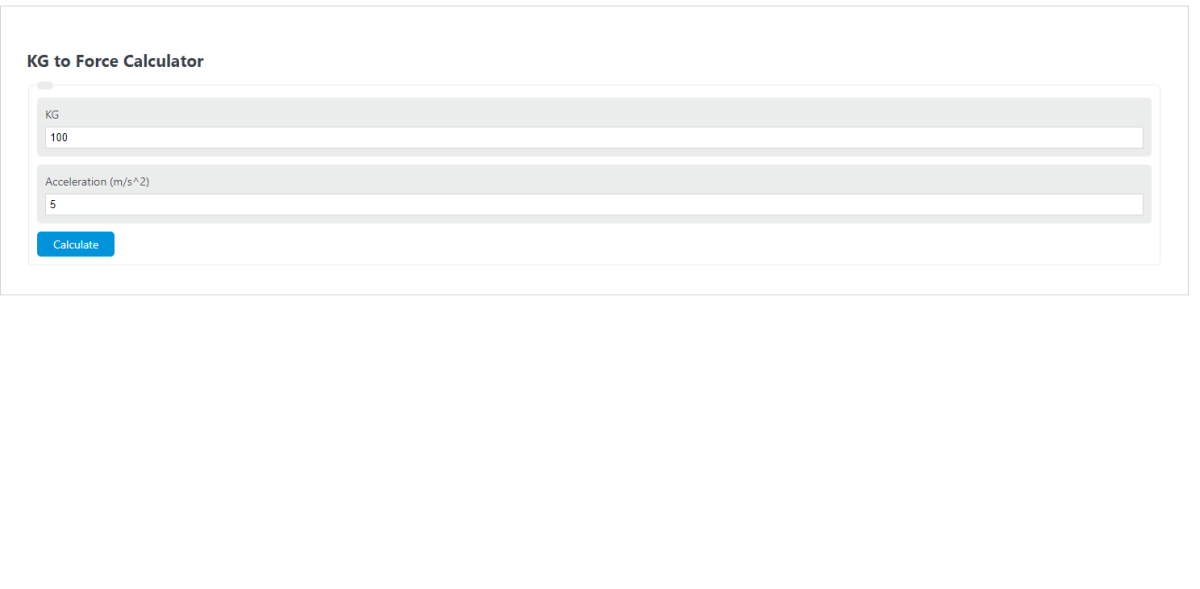Enter the mass in kilograms (kg) and the acceleration into the calculator to determine the force.
- All Force Calculators
- Weight to Force Calculator
- Mass to Weight Calculator
- Pound Mass to Pound Force Calculator
KG to Force Formula
The following equation is used to calculate the force from kg.
F = kg * a
- Where F is the force (N)
- kg is the mass in kilograms
- a is the acceleration (= 9.81 m/s^2 for gravity of Earth)
To calculate the force from kilograms, multiply the kilograms by the acceleration.
How to Calculate Force from KG?
Example Problem:
The following example outlines the steps and information needed to calculate the force from kg.
First, measure the mass and convert the units to kilograms. In this example, the mass is measured to be 150 kg.
Next, determine the acceleration of the mass. For this problem, the mass is accelerating at 50 m/s^2.
Finally, calculate the force from KG using the formula above:
F = kg * a
F = 150 * 50
F = 7,500 N
FAQ
What is the difference between mass and weight?
Mass is a measure of the amount of matter in an object, typically measured in kilograms or grams. Weight, on the other hand, is the force exerted by gravity on that mass. Weight is dependent on the acceleration due to gravity and can vary depending on the location in the universe, while mass is a constant property of an object.
How does the acceleration due to gravity affect the force calculation?
The acceleration due to gravity (9.81 m/s^2 on Earth) is a key factor in calculating force when considering the weight of an object. Since force is the product of mass and acceleration, any change in the acceleration due to gravity will directly affect the calculated force. On other planets or in different gravitational conditions, the acceleration value would change, thus altering the force despite the mass remaining constant.
Can this formula be used for calculating forces other than weight?
Yes, the formula F = kg * a is a general equation derived from Newton’s second law of motion, which states that force is the product of mass and acceleration. While it is commonly used to calculate weight (the force of gravity on an object), it can also be applied to any scenario where a mass is being accelerated, such as a car accelerating down a road or an object being pushed or pulled across a surface.
